The Sierra Nevada is well known for being unique in its topography (think Yosemite), but it is also special in the large number of plants and animal species that are found here. According to the Forest Service’s Sierra Nevada Forest Plan Amendment there are at least 1,300 plant species in the Sierra Nevada, and at least 450 species of vertebrate animals. This doesn’t even include the fungi, lichen, and bryophytes found here, or invertebrate species. Wow! This amazing diversity of plant and animals that are found in our mountain range is largely due to the dramatic change in elevation of our 400-mile long mountain range. The north-south direction of the range catches the prevailing westerly winds from the Pacific that bring precipitation needed for the diverse biotic “zones” that shift in plant and animal composition as you get higher in elevation.
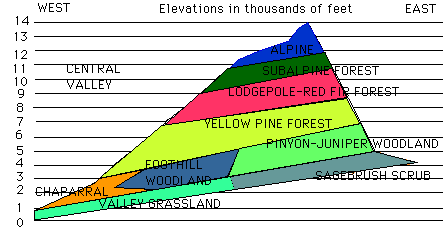
Biotic “zones” of the Sierra Nevada. Graph courtesy of rain.org
Endemic species are ones that are only found in a particular region or location and nowhere else in the world. I have enjoyed learning that there are dozens of plant species and many animal species that are endemic to our Central Sierra Nevada region. These plants and animals have either been reduced in their numbers to a point that they are only found in a remnant area of an original range, or they have adapted to specific local circumstances that have caused them to evolve to have unique genetic traits that distinguishes them as a species.
Learning about these species and the habitats that they thrive in is one way to get more familiar with the ecology of our region. These are some of my favorite endemics, learn a bit about them and grow your knowledge of our beautiful spot on this planet!
1. Tuolumne Fawn Lily (Erythronium tuolumnense)- this member of the lily family has a gorgeous yellow flower and is only found in a small section of of the South Fork Stanislaus River drainage, as well as one of its tributaries and a couple of other isolated spots. Brief to bloom, in certain places it can blanket the forest floor in yellow during its short bloom period – a flower-lover’s paradise. The Tuolumne fawn lily grows in moist north-facing slopes in conifer forest habitat.
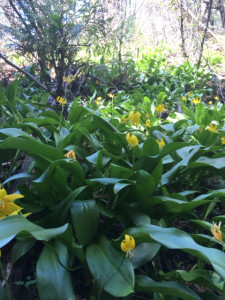
Tuolumne fawn lily.
2. Great Gray Owl of the Sierra Nevada – the great gray owl (GGO) is the largest owl species in North America ( with a five-foot wingspan and standing height of two feet). The subspecies found in the Sierra Nevada (Strix nebulosa Yosemitensis) is uniquely adapted to our mountain range, and is incredibly rare (only 200-300 thought to exist in its entire range). Isolated from other GGOs approximately 24,000 years, Yosemite’s great gray owl has evolved to nest in conifer forest habitat that is in close proximity to mountain meadows (where they prefer to hunt).
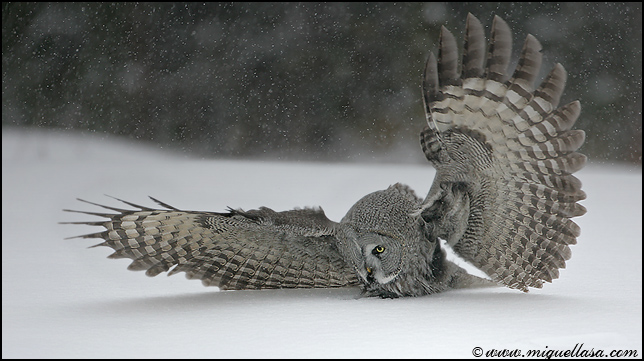
Great Gray Owl
3. Red Hills Roach – The Red Hills roach (Lavinia symmetricus) is a tiny fish that is found only in several small creeks that flow from the BLM-managed Red Hills Area of Critical Environmental Concern (ACEC) just outside the town of Chinese Camp in Tuolumne County. Being familiar with the Red Hills, I can tell you that most first time visitors to that area would not guess that fish would be found in any of the streams (which only flow in the springtime, then dry up to pools) in this hot and arid landscape. I too, find it amazing that this tiny geographically isolated fish has managed to persist in such a difficult environment. According to BLM’s web page on the Red Hills, the roach “has unique morphologic characteristics, which make them noticeably different from other roach populations, notably a chisel lip. The chisel lip is used to scrape algae, a major food source, off submerged rocks.”
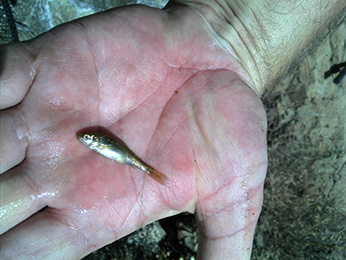
Red Hill roach. Photo source: BLM
4. California Verbena – The California verbena (Verbena californica) is a flowering plant that is also found in the Red Hills ACEC, and is found growing nowhere else. It is worth noting that there are actually several plant species found only in this small geographic area, which raises the question – why? The CA verbena in the Red Hills is confined to the short stream reaches that remain moist year round because of ground water seepage. But the key to the number of rare and endemic species in this relatively small area (about 7,000 acres) lies in the geology of it. The Red Hills is an isolated outcropping of serpentine rock, and the serpentine-derived soil is toxic for the majority of plant species in the surrounding area. Thus any plants that are able to survive in this unique growing environment have had to adapt through evolution, causing distinct genetic traits to form that allow these species to survive and thrive. Isn’t nature amazing?
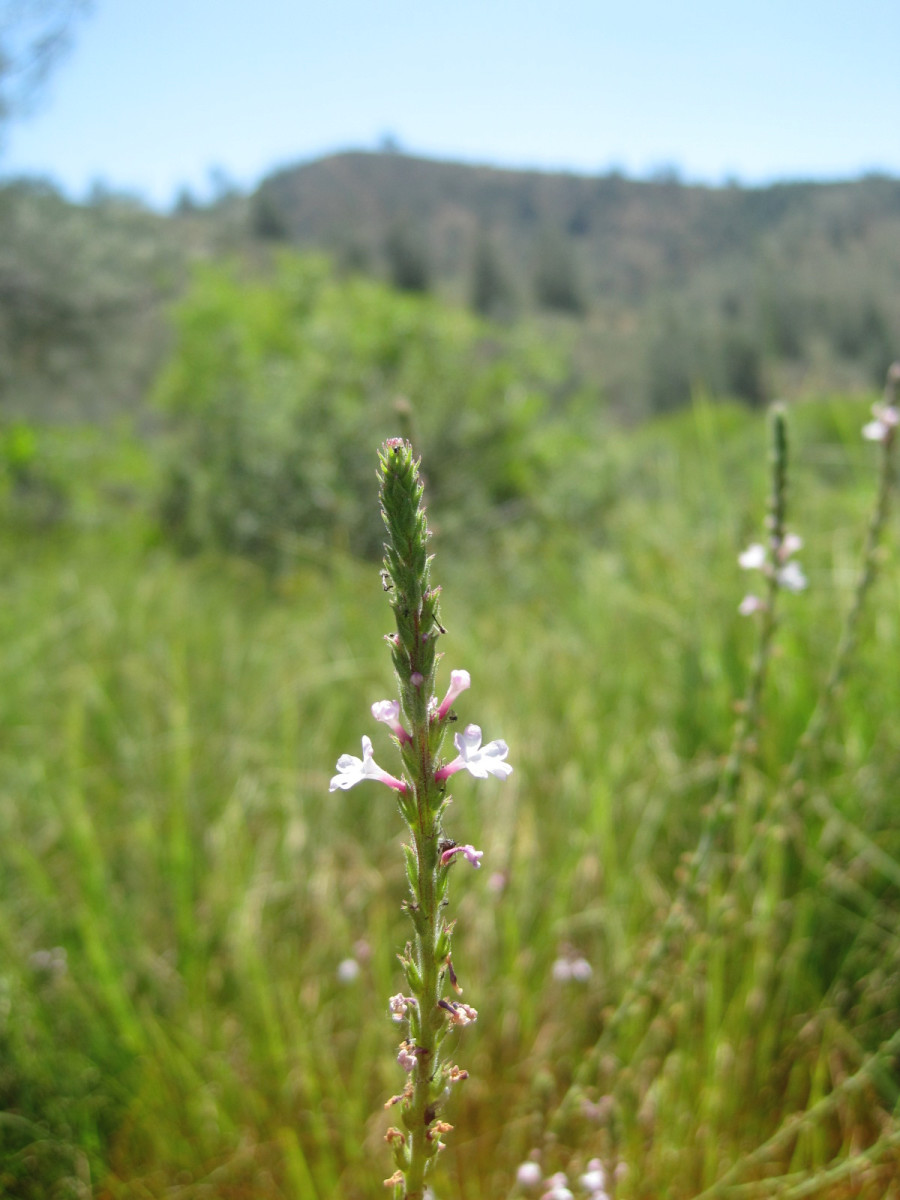
California verbena.
5. Yosemite Toad – This high elevation amphibian (Bufos canorus) was recently classified as a Federally threatened species due to their declining numbers and range. Found in and near montane meadows and wetland areas only in the central part of the Sierra Nevada, they have evolved to mate and lay their eggs right at snowmelt in the springtime in seasonally wet pools. This mountain toad has been renowned by early naturalists such as John Muir for their melodious trilling mating call. Once the tadpoles of the Yosemite toad hatch in these pools, they have evolved to metamorphose (change from tadpole to toad) when the pools start drying up. A major threat to the toad’s habitat is from livestock grazing on national forest lands where toads occur, as cows degrade habitat through overgrazing sheltering vegetation and damage meadow integrity with hoof pocking and disturbance. CSERC works to identify where that damage is occurring to share with Forest staff and better protect this at-risk species.

Yosemite toad in a grazed meadow in the Stanislaus Forest.
As you may already know, CSERC’s mission is to protect the water and wild places of our region, and that includes the rare (and common) species that depend on a whole and healthy habitat to thrive. Learn more about what CSERC is doing to accomplish that on our Issues page.

